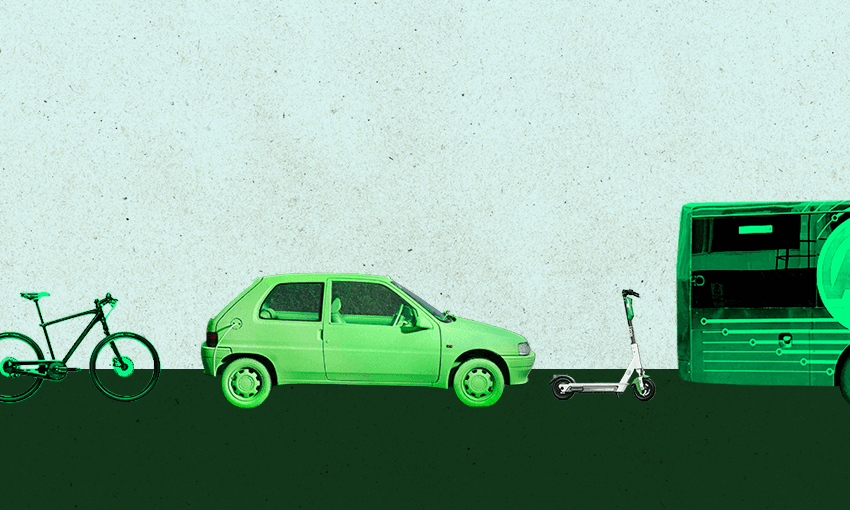Later this month the government’s fuel excise duty will be added back to petrol prices. With money already stretched thin for many, what can be done to make our dollar go further at the pump?
It’s the nature of the times that most of us are looking for ways to reduce the cost of living – and that includes the cost of being mobile. Price shock at the petrol pump isn’t quite the same experience now that it was last year, when fuel prices were extremely volatile following Russia’s invasion of Ukraine. But there’s one increase we know is going to happen soon.
The 25 cents-per-litre fuel excise duty cut by the government as a cost-of-living measure last year comes back to the pump on June 30. Add on GST and that’s nearly 30 cents a litre more on our petrol bills from that date.
But with driving the only practical option for many people around the country, how can we make sure our fuel is going the distance? From changing how you drive, to changing when you drive and how you purchase fuel, there are many ways to make the most of the expensive drop.
One of the ways you can reduce the impact of this price rise is by reducing your need to buy fuel in the first place, says Automobile Association policy director Terry Collins.
“Your right foot on the accelerator is the biggest input,” he says. “Accelerate slowly away from the lights and anticipate the red light – take your foot off the accelerator and roll up instead of putting your foot on the brake. If you put your foot on the brake, you’ve just got rid of all the energy you’ve paid for. You can save anywhere between 10% and 40% on petrol usage driving in the city, just by the way you anticipate traffic and drive.”
Z’s chief executive officer Lindis Jones agrees, adding that “making sure that you’re not carrying around that set of golf clubs all week in your car if you’re only going to use it at the weekend,” can also reduce fuel consumption.
Even if you don’t own a hybrid or EV, there are easy ways to help keep the tank fuller for longer – such as tyre pressure, which is an important one to check as the seasons change.
“Tyre pressures – or PSI in tyre talk – are subject to temperature, so if you pumped your tyres up a couple of months ago in summer, they’re going to be lower now because it’s winter and it’s colder,” says Collins. Low tyre pressure increases the resistance of your tyres on the road, which ends up using more petrol.
Higher-end cars with cruise control features will even let you choose better fuel economy on the open road – and could save you between 15 and 30% on fuel consumption, says Collins. If you drive a hybrid, there’ll be a display on the dash that shows you when you’re effectively driving as an EV and not burning fuel – there’s a reason that Uber drivers take off very slowly.
Collins also suggests paying attention to loyalty schemes that translate to fuel discounts. “Some of them are quite substantial, like 50 cents a litre. So if you’re going out shopping just look around the loyalty programs and see who offers you discounts at other stores.”
Collins buys his fuel on a credit card he pays off every month, and converts the loyalty points he earns into fuel vouchers. “So not only am I using my discount card for fuel, I’m also using my credit card to get discounts for more fuel in future.”
There is also, of course, the very sound option of simply not using your car so much.
“I take public transport into work,” says Collins. “And I happily do that, because I avoid parking. If it’s a big shop I’ll take the car, but if it’s only some stuff, I’ll go for a walk. I think people have just got to get into the idea of not doing the 500 metre car drive. The car will use more petrol because it’s not able to get to operating temperature. If you’re going out, put a whole lot of jobs together – combine a whole bunch of things into one trip as opposed to just going on each individually.”
“I’m a keen cyclist,” says Z’s Jones. “So whenever I can, I cycle to work. It’s great to see new cycleways being built. The more cycling we see out there the better.”
But what if you could buy your future petrol now, and skip the incoming excise hike? That’s what Z’s Sharetank model is best for.
“What Sharetank does is almost like hedging in the stock market or the foreign exchange. The app looks at all of Z’s service stations within a 30km radius and allows you to buy fuel at the cheapest rate, regardless of where you are,” says Collins. “You have a virtual petrol tank where you can buy anywhere between two and 1,000 litres.
“Z will allow you to buy the fuel before [the price] goes up and you’ll still be able to get your fuel at that price after the fuel excise duty goes back on,” Collins says.
“The resumption of the fuel excise duty will be another reason for people to look at fuel prices and manage their expenditure accordingly,” agrees Jones. “Sharetank is one way of doing that. You’ve still got price variation between sites which is a sign of healthy competition, but it’s a way of taking out the guesswork for Kiwis trying to find the cheapest price day to day.”
Jones says the company launched Sharetank fairly quietly three years ago, but it has picked up “several tens of thousands” of users and they’re “incredibly loyal” once they start. “Some of them use it to manage fuel purchases for family members, and then some small businesses use it because it’s got everything around GST invoicing and is a useful way for small fleets to purchase fuel.”
In the future of course, EVs – currently running at about 10% of new vehicle purchases – will be the majority of the light vehicle fleet. Z has been talking about that change longer and louder than any other fuel company.
“We’re doing more than making plans,” says Jones. “Our target is to have high-capacity EV charging at 20% of our sites by the end of the year. That’s just the start, but it’s our commitment.”
Z recognises EVs will not be the only transport means in the future. There are many ways people get around in Aotearoa, though the choices are often forced upon us by lack of access to broad transport infrastructure. For Jones, an ideal situation would see New Zealanders have far more options to get from A to B – consisting of a better balance of private cars, rideshares, public transport, walking and cycling.
“Public transport in New Zealand also has a real role in reducing our carbon emissions. It’s absolutely critical that customers feel like they’ve got a legitimate choice in going about their lives – but I’m not sure that they always do at this point in time.”
Until that point, making the most of the fuel we do use can help to both reduce our carbon footprint and spend less at the pump, which at a time like now, is a welcome relief.

